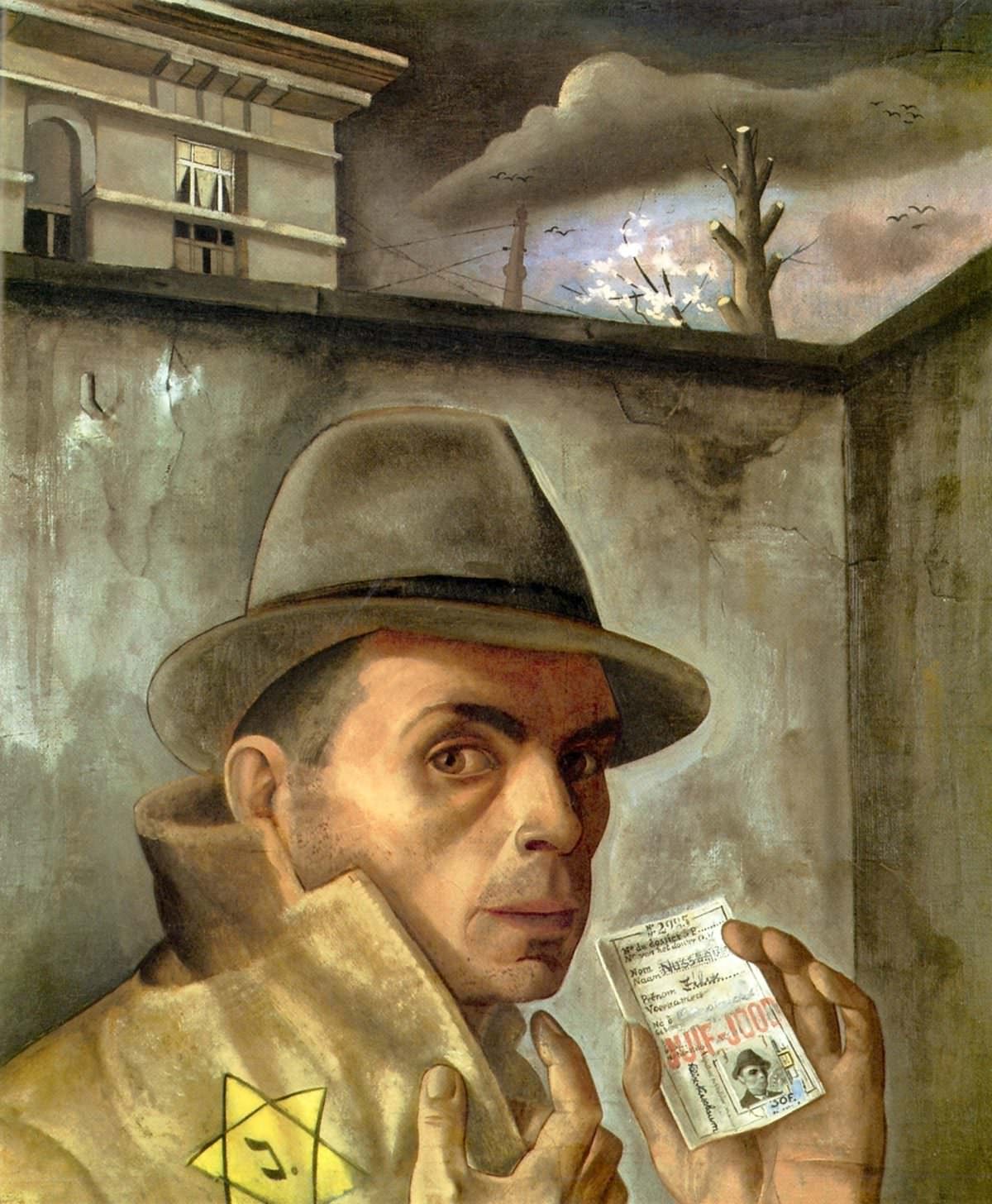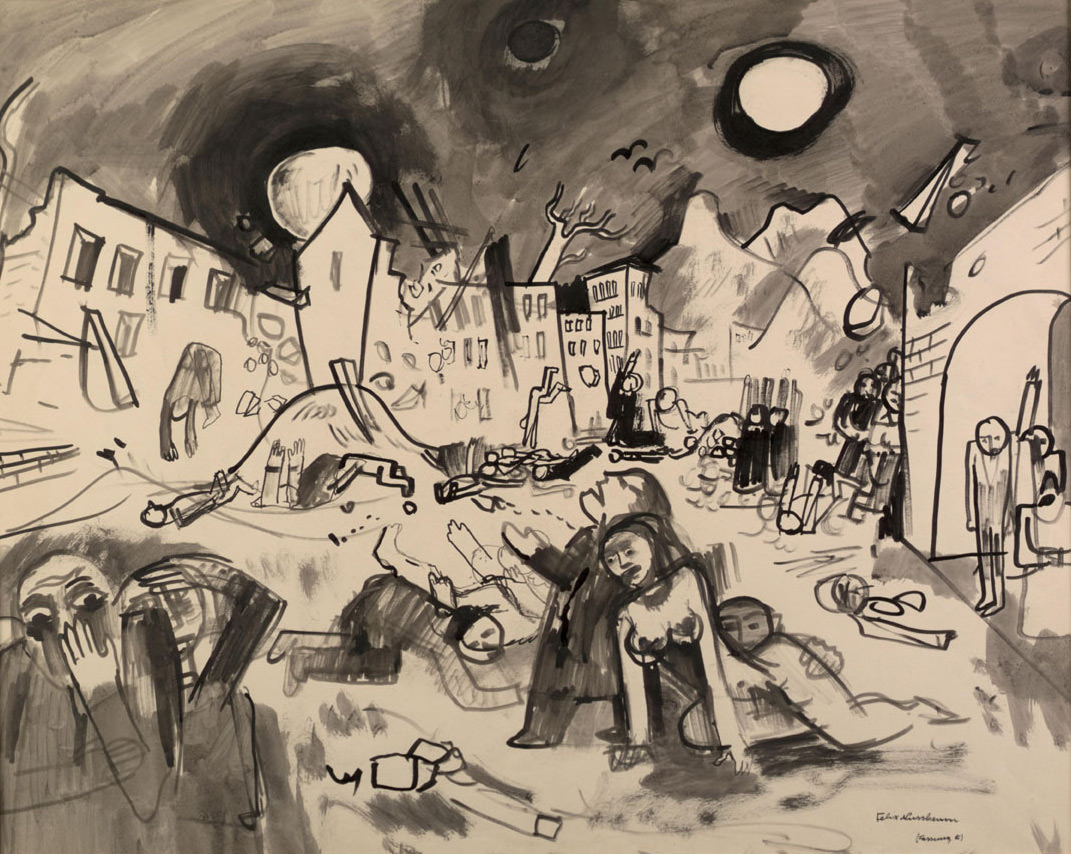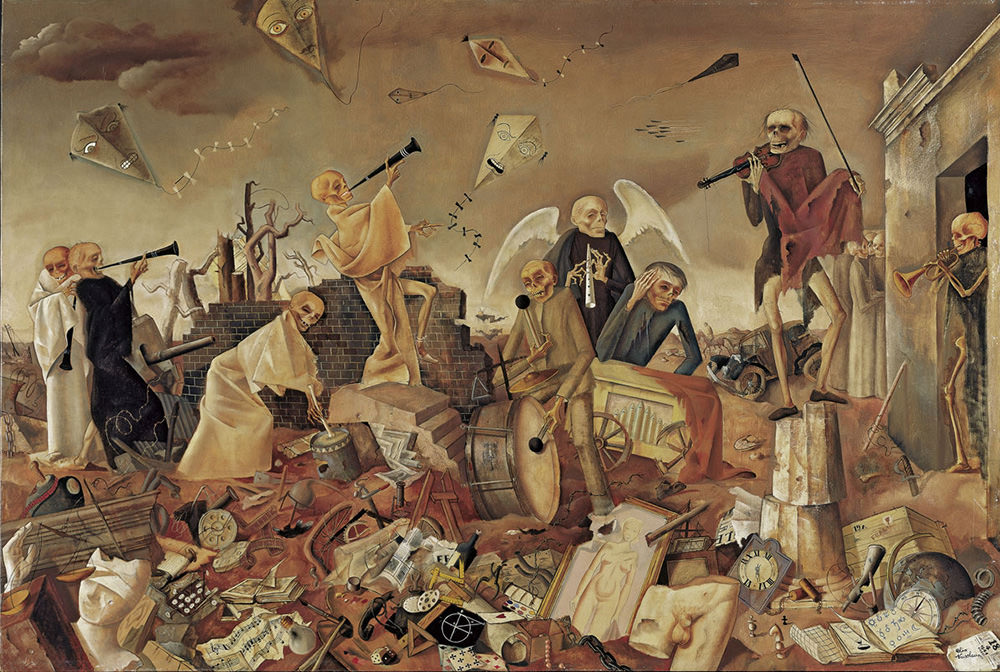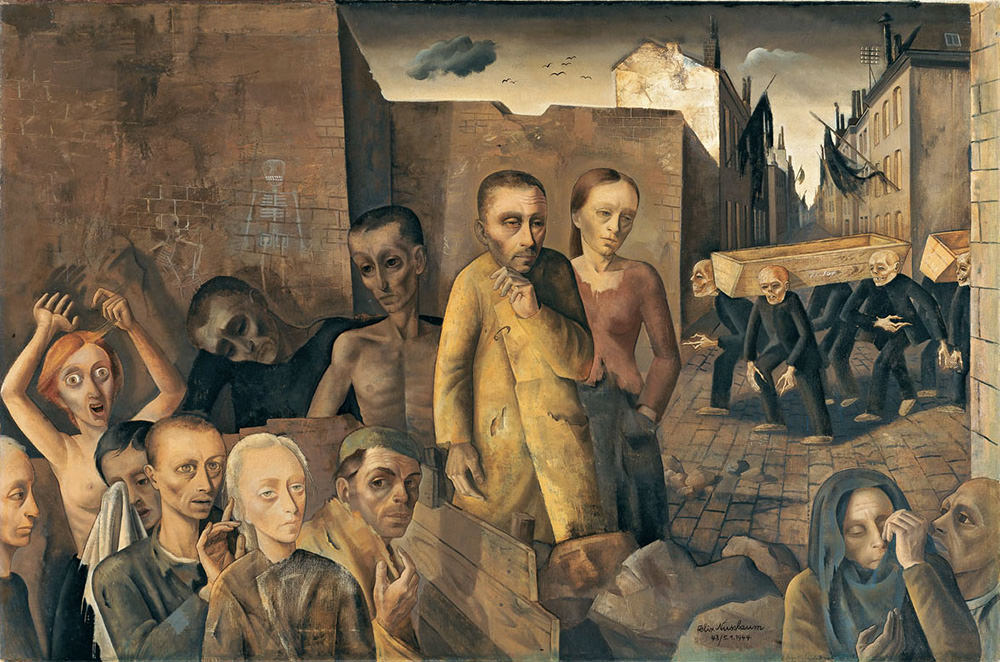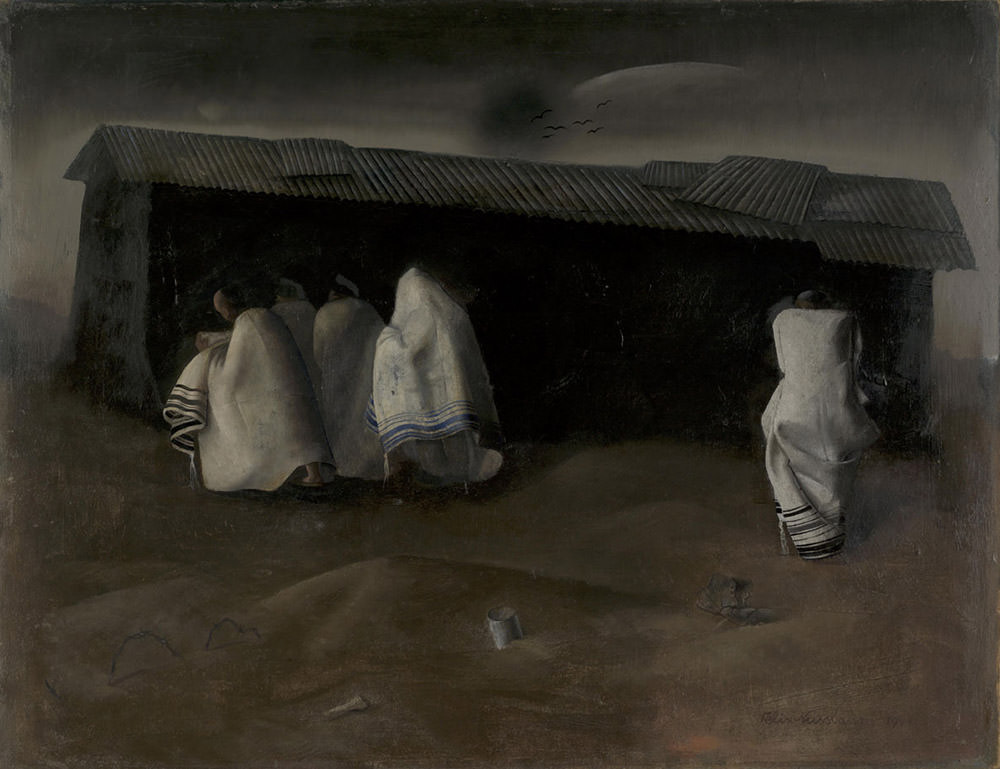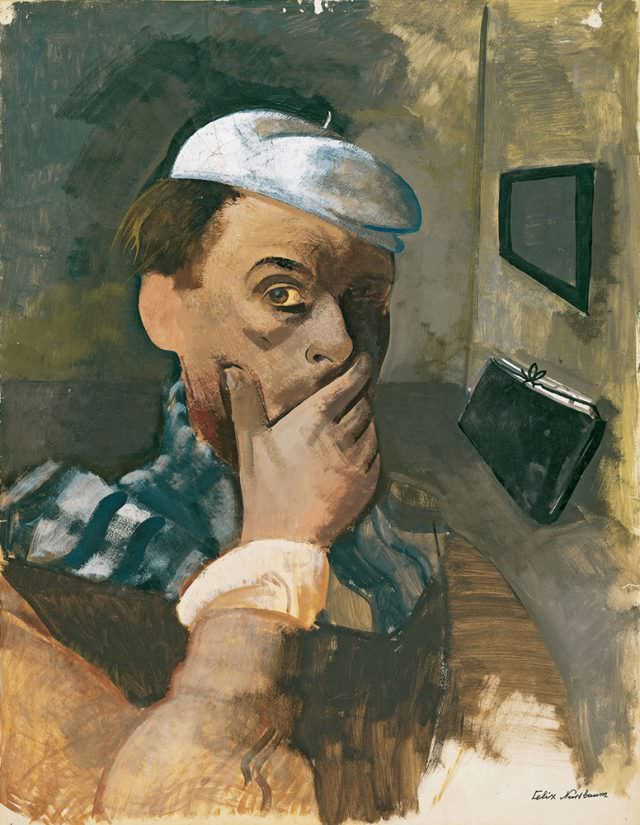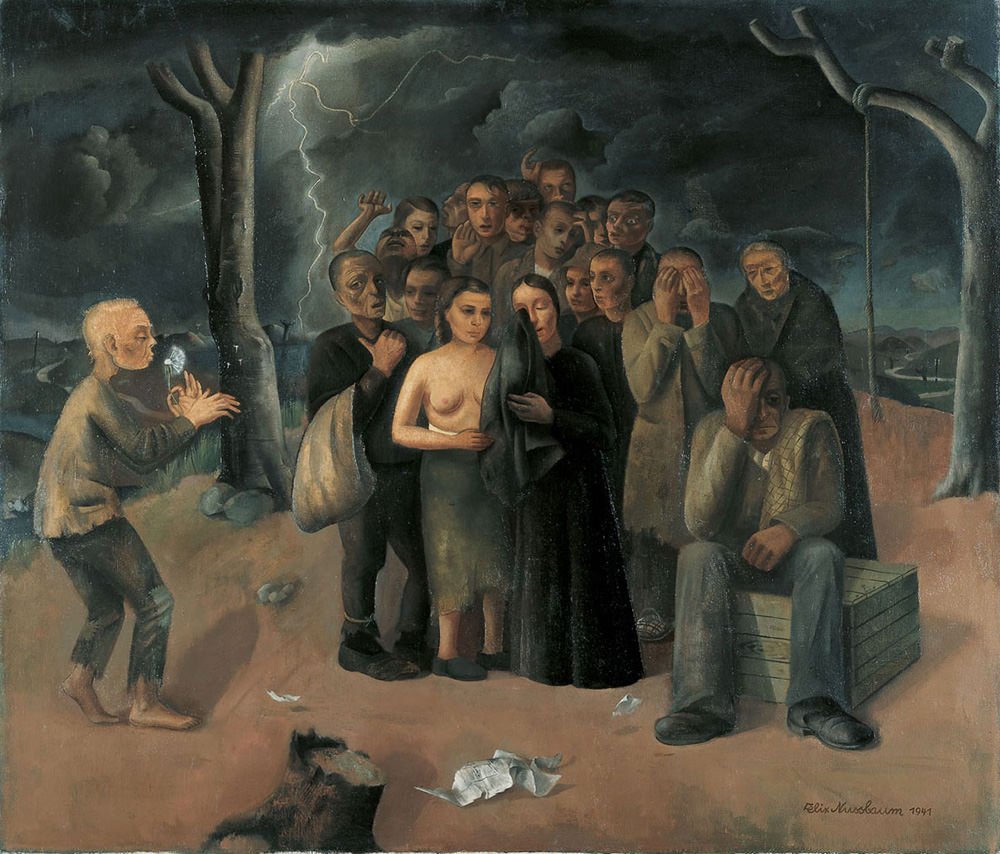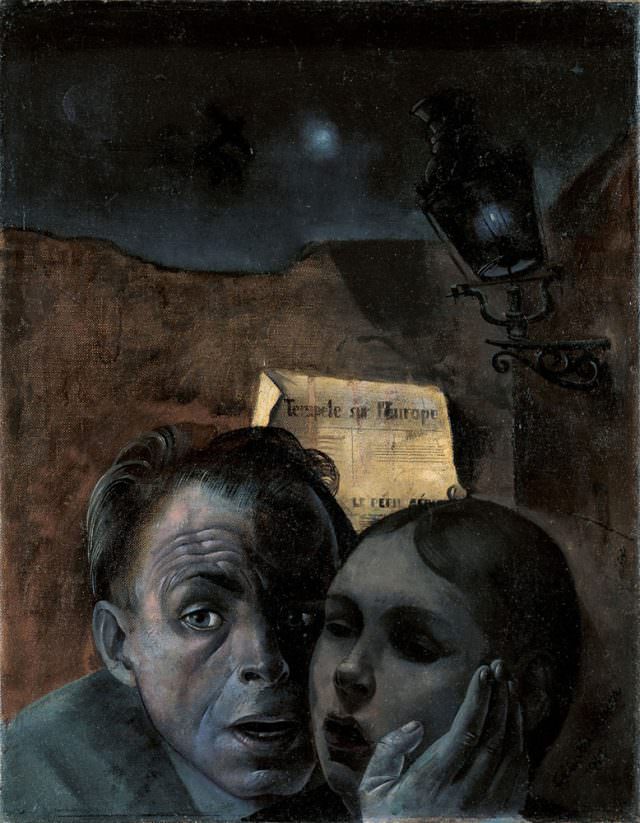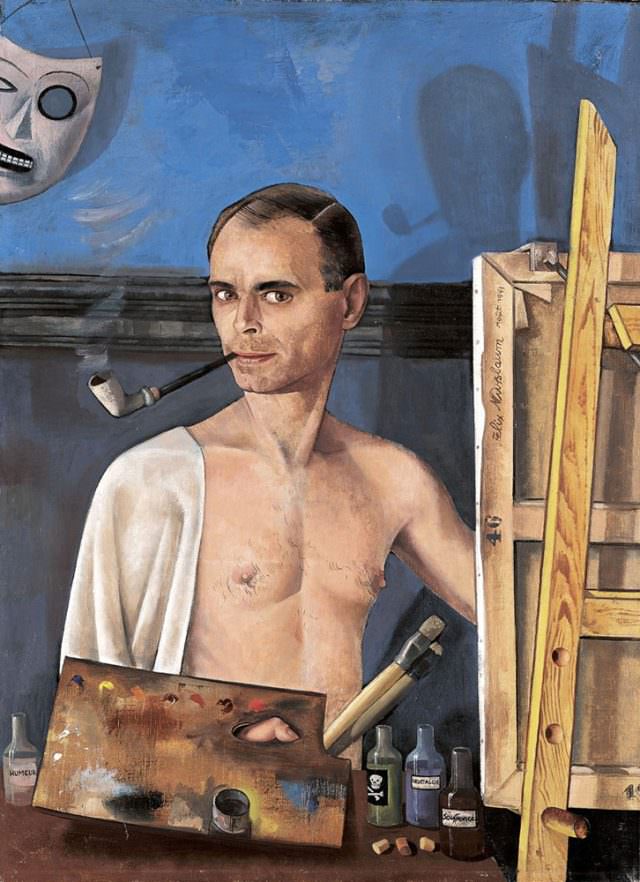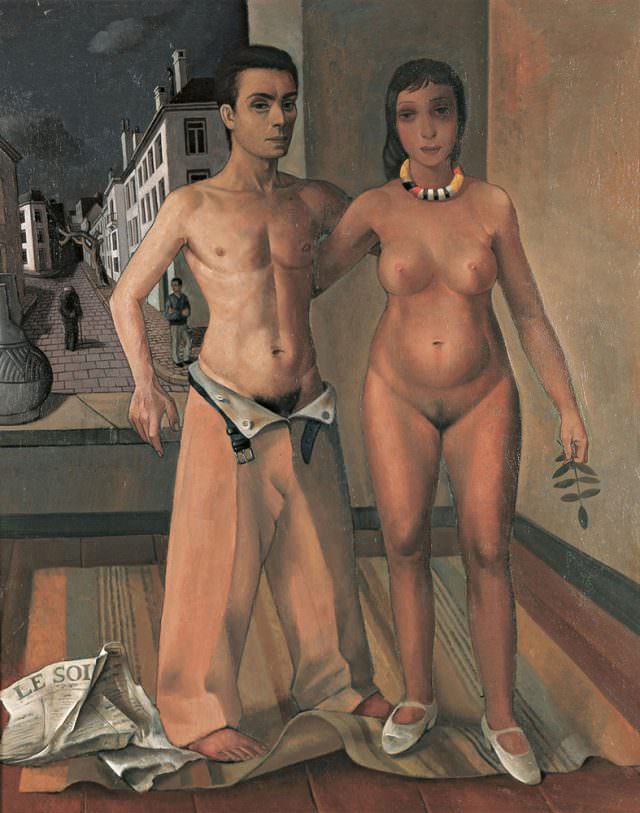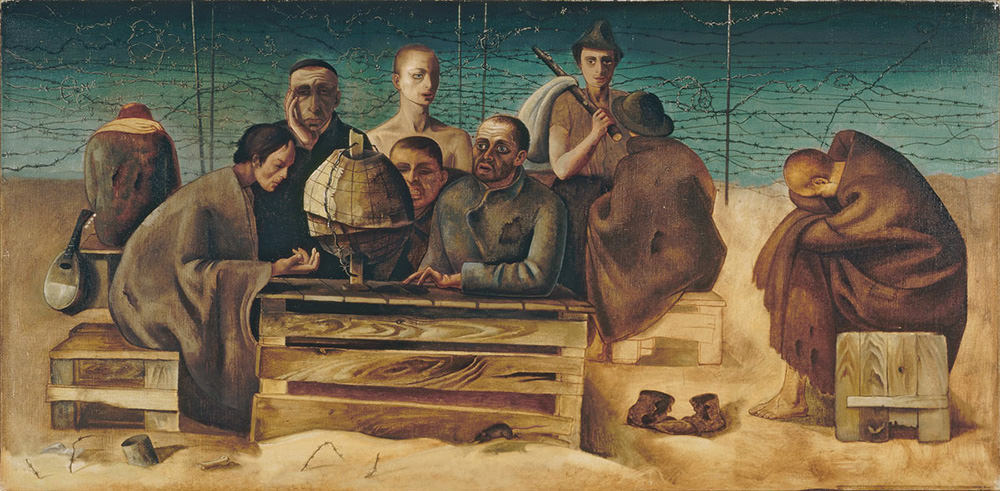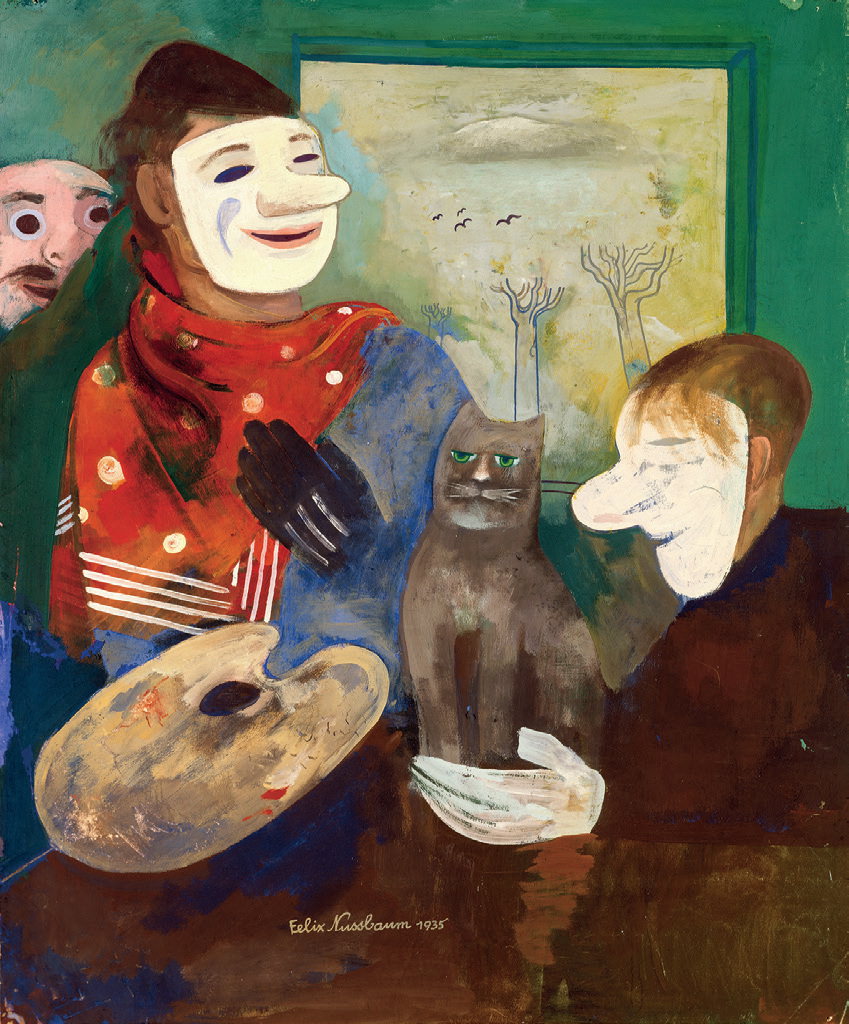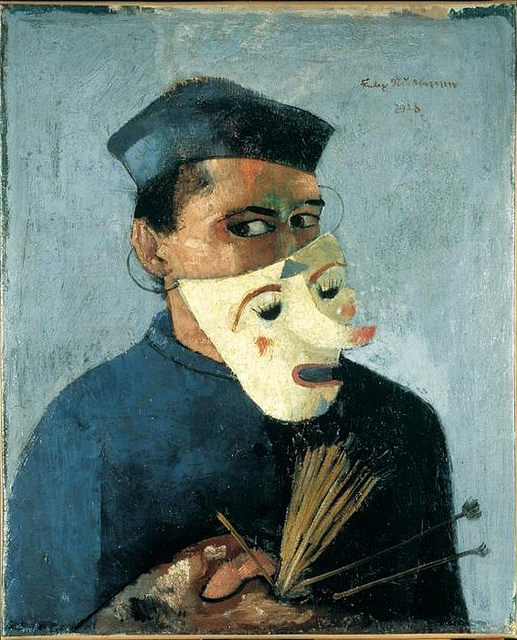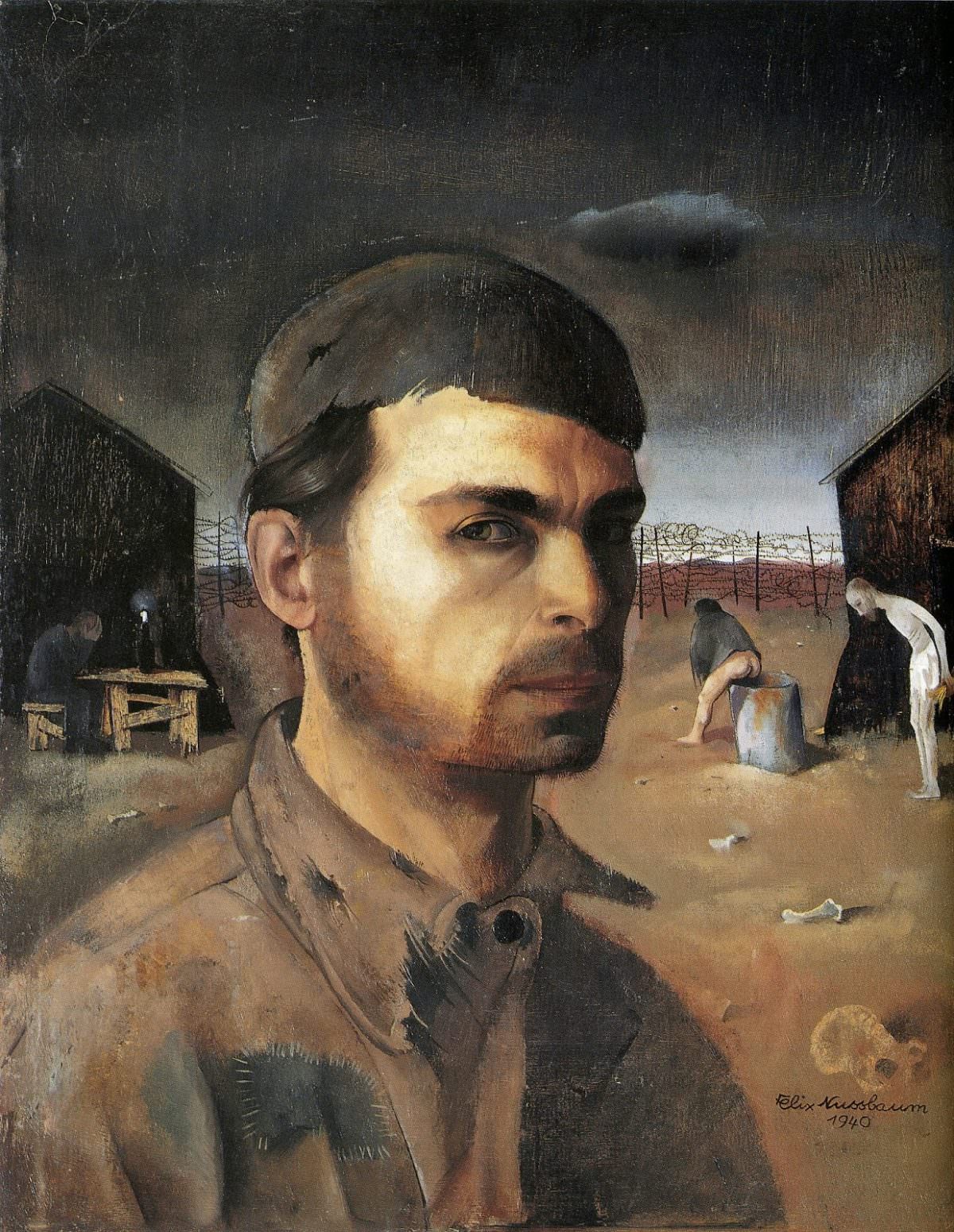Felix Nussbaum was a German-Jewish painter and draftsman who lived during the 20th century. He was born in 1904 in Osnabrück, Germany and studied art in Hamburg, Germany and Brussels, Belgium. In 1933, Nussbaum and his wife Felka Platek, who was also an artist, emigrated to Belgium to escape the rise of the Nazi party in Germany.
Throughout his career, Nussbaum’s work was deeply influenced by his Jewish heritage and his experiences as a Jewish refugee during the Holocaust. His art often depicted the suffering of Jewish people during the Holocaust and the persecution they faced under the Nazi regime.
Nussbaum’s artworks were characterized by their expressiveness, emotional intensity, and powerful social and political commentary. His paintings were deeply personal and often depicted his subjects’ emotional and psychological states, many of whom were Jewish refugees like himself. His most notable artworks include “Self-Portrait with Jewish Identity Card” (1938), which depicts the artist holding his Jewish identity card in front of a distorted and fragmented version of his own face, and “The Torture of the Jews” (1944), which depicts a group of Jewish people being rounded up and taken away by the Nazis.
In 1944, Nussbaum and his wife were arrested by the Nazis and sent to the Auschwitz concentration camp, where they were killed. Today, Nussbaum’s art is remembered as a powerful and important testimony to the Holocaust and its victims.
Felix Nussbaum is considered one of the most important Jewish artists of the 20th century, his work reflects his political, social and religious context, and it is a powerful testimony of the Holocaust and its victims. His art is part of the permanent collection of major museums around the world, such as the Jewish Museum Berlin, and the United States Holocaust Memorial Museum.


